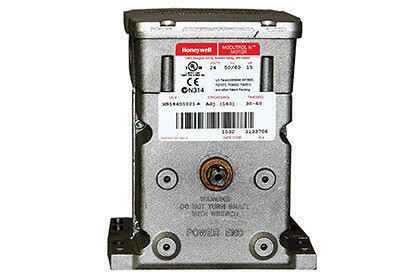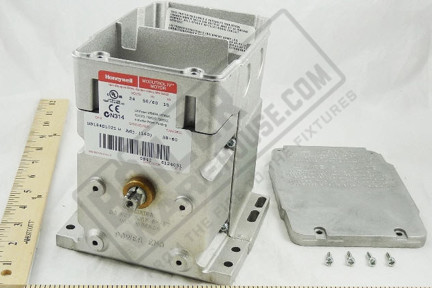Modulating Motors
Modulating Motors have many uses in commercial and industrial applications. Some move dampers, some are mounted on feedwater valves, and some drive complete linkage systems that operate your fuel and air intake on your burner. The most common in the boiler industry we see are Honeywell. But we also supply Johnson Controls and Barber Colman mod motors.
If you do not see the part you want below, feel free to use the chat function and see if we possibly have the part you are looking for in stock.

Most Popular
What is a Modulating Motor & What is its function?
Modulating motors provide precisely controlled motion
Boilers need constant adjustment to maintain proper capacity, especially during demand surges. To keep it supplied properly, modulating motors are used to precisely adjust the flow of fuel, oxygen, and feedwater.
Modulating motors move the things that matter most
Modulating motors are precise, electronically controlled actuators that can move through a preset range of motion, with the ability to stop and hold at any point in that range. They are connected to the component they are designed to move via mechanical linkages or a direct connection. They are found in nearly every moving part of a boiler including:
- Incoming air dampers
- Exhaust or purge dampers
- Fuel valves
- Feedwater valves
Different Types of Modulating Motors
WARE stocks two kinds of modulating motors:
- 120-Volt
- 24-Volt
The Role Modulating Motors Play in a Boiler
Every variable in a boiler’s operation can affect its performance, including feed water supply, fuel flow, oxygen flow, and exhaust movement. Modulating motors allow the boiler’s control system to adjust these variables with greater precision, so every part of the boiler can work together to maximize performance and efficiency.
What is the Effect of a Bad Modulating Motor?
If a Modulating Motor is starting to fail, or if it starts to fall outside of calibrated parameters, it will not move to its correct set point. This will cause the boiler to get too much water, too much fuel, or too much oxygen, which will affect its ability to produce steam.
Things to Consider About Modulating Motors:
- Modulating motors need regular inspection and calibration, but so do their linkages.
- Any slack in the linkage can throw the boiler’s performance off and waste fuel.
Helpful Resources
Relevant WARE Videos on Modulating Motors
What are Modulating Feedwater Valves?
Weekly Boiler Tip - Pressure Control Episode 2: Modulating Control
Getting Control of your Feed Water with the WARE Mod-V - Boiling Point
Honeywell Modulation Motor Overview - Boiling Point
Linkage vs Parallel Positioning - Boiling Point
Difference between Deaerator and a Condensate Tank - Boiling point
Weekly Boiler Tip - Using a Manual Potentiometer to Setup a Honeywell Modulation Motor
Weekly Boiler Tip - McDonnell Miller 7 B Switch | Different Types of Level Controls
Flame Safeguard Operations Part 2 - Boiling Point
Weekly Boiler Tip - Checking If Mod Motor Wires are Pinched (Modulation Motor Maintenance)
Talking about Electric Boilers - Boiling Point
Explore over 750+ explanatory videos on boilers and boiler systems on our Youtube channel. Our videos can help you quickly grasp complex boiler topics. Watch more here!
Relevant WARE Blog Articles on Modulating Motors
Modulating Feedwater Valves: The Method Behind the Movement
Modulating Motors: On, Off, And Everywhere in Between
Our informative and educational blog content can help you gain a deeper understanding of the boiler room. Read more here!
Technical Documents
Modulating Motors FAQ
How much torque can a modulating motor put out?
Obviously, different boiler components are going to require different amounts of force to operate smoothly and responsively. The modulating motors that WARE stocks typically generate up to 150 inch pounds of force.




